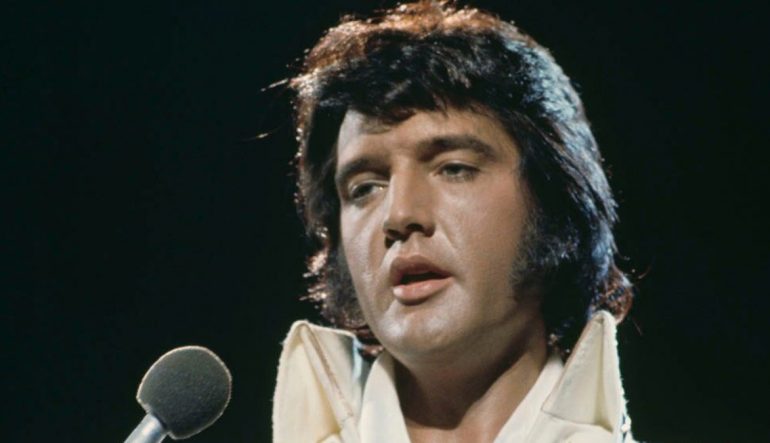Do we need defibrillators in public toilets?
When Elvis Presley (pictured) was found dead in Graceland’s master suite bathroom on August 16 1977, his family was terrified at the risk to his reputation.
Rumours The King had died of a drug overdose abounded. The subsequent toxicology report showed opiates and quaaludes had contributed to his death – but so had acute constipation.
Elvis experienced a massive heart attack while sitting on the toilet, struggling to make a bowel movement.
As ignominious an end as it was, it was also a common one.
Cardiac arrests on toilets are common
If you were to experience a cardiac arrest today, there’s a very good chance it would happen in the most private room of your home.
This study of more than 900 cardiac arrests over a four-year period found 11 per cent occurred in the toilet.
That same study found low rates of survival of patients who experienced cardiac arrests in toilets – mainly because the events weren’t witnessed, and took too long to discover.
A possible reason for this seemingly high prevalence of toilet-centric cardiac arrests could be related to the warning signs preceding a cardiac event.
For example, a 2015 study suggested nausea and abdominal and back pain are signs a sudden cardiac arrest is imminent. These same signs are clear signals that a quick trip to the lavatory might be a good idea.
Going to the bathroom can also trigger a vasovagal response; that is, a slowing of the heart rate caused by pressure on the vagus nerve.
RELATED ARTICLE: Being ready to buy time
So, do we need defibrillators in toilets?
Rapid defibrillation is the single most effective way to save a person’s life from sudden cardiac arrest.
That person will have the best chance of survival if an AED (automated external defibrillator) is placed on their chest within three to five minutes of their collapse.
For that to happen however, the event needs to be witnessed.
How best to be prepared for cardiac arrest
The first step towards preventing a cardiac arrest in the lavatory, is knowing if you’re at risk.
Cardiac arrests occur suddenly. We know approximately 80 per cent occur in homes and residences.
At the end of his life, Elvis was the embodiment of the many factors that can contribute to the risk of a catastrophic cardiac event, such as heart attack or sudden cardiac arrest.
Type II diabetes, an enlarged heart, drug addiction and a steady diet of unhealthy food all contributed to Elvis Presley’s risk of heart failure.
As University of Notre Dame Professor of Cardiology, David Playford explained to us recently, there are many ways to identify cardiac risks. According to Professor Playford, the way to be more prepared is to have access to emergency facilities.
“Everyone knows about ringing emergency services if somebody collapses – but it takes time for an ambulance to arrive.
“In those critical minutes, the first three minutes, somebody can die before the ambulance actually arrives.
“So, having emergency defibrillation available onsite, at the point where the event occurs, can be absolutely life-saving.
“The capacity to defibrillate somebody, to get them out of their cardiac arrest and save their life, could make a massive difference to the overall survival of people who have out-of-hospital cardiac arrest.”
For someone who is at-risk of heart failure, this means being conscious of when that risk may manifest into a heart attack or cardiac arrest. It also means taking steps to ensure the people around them are aware of the risks as well.
And yes, it may mean locating an AED in the bathroom.



